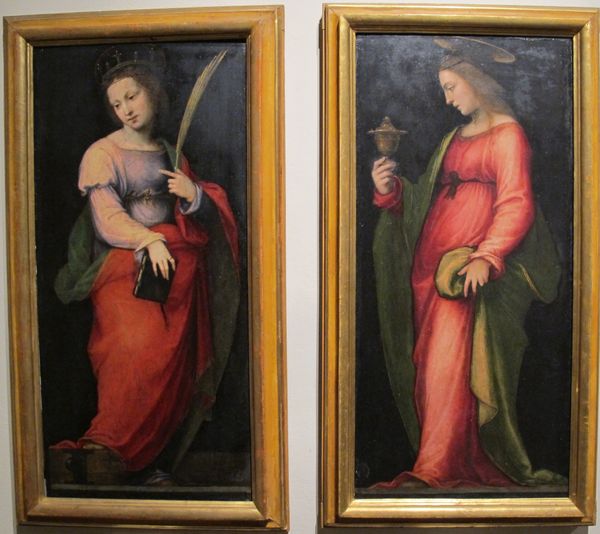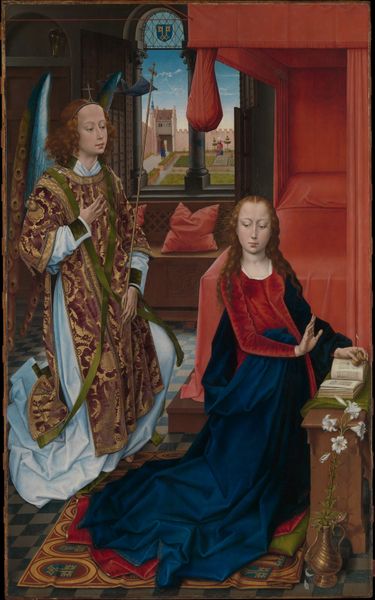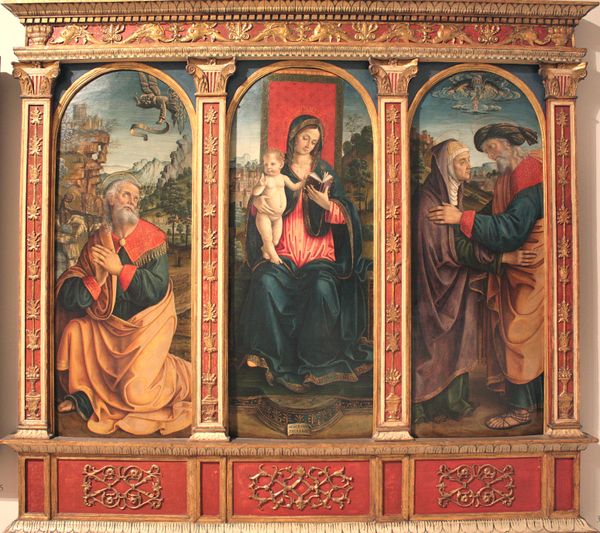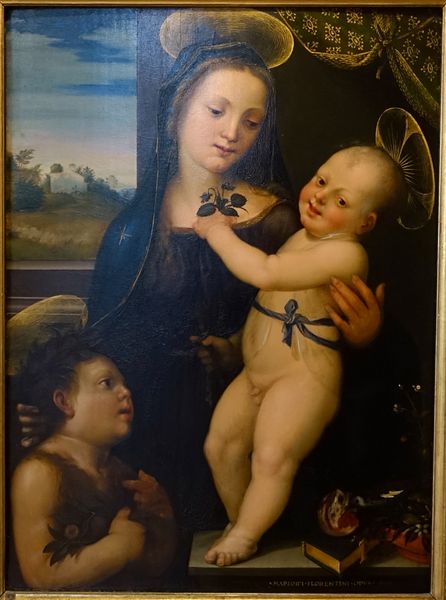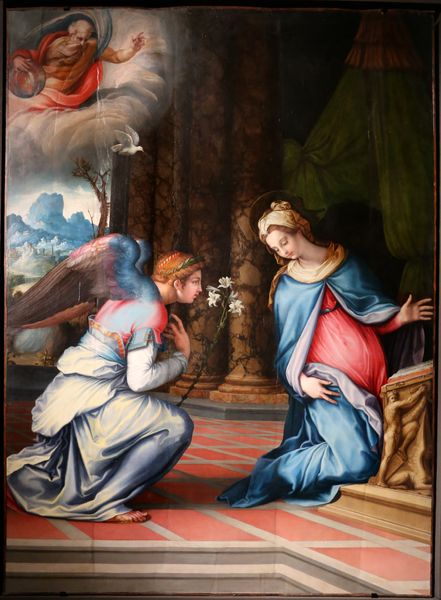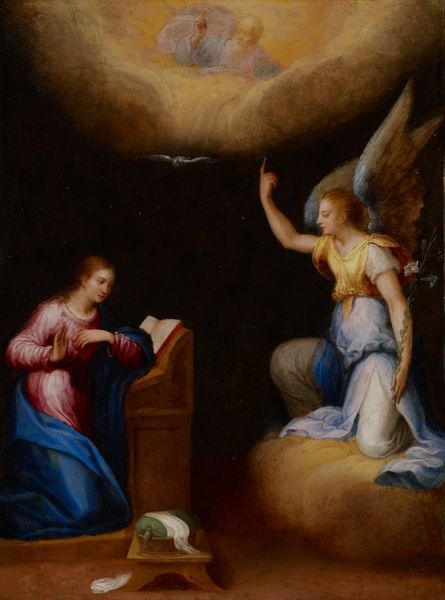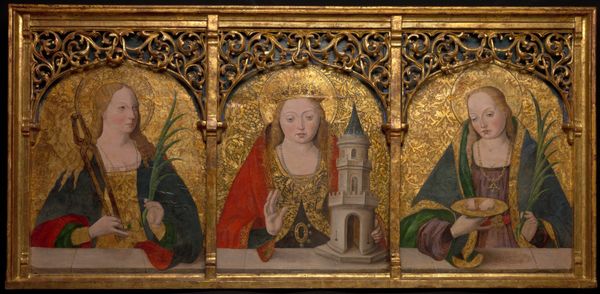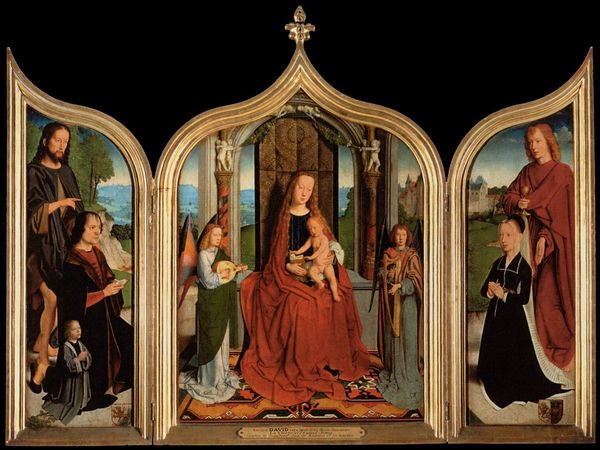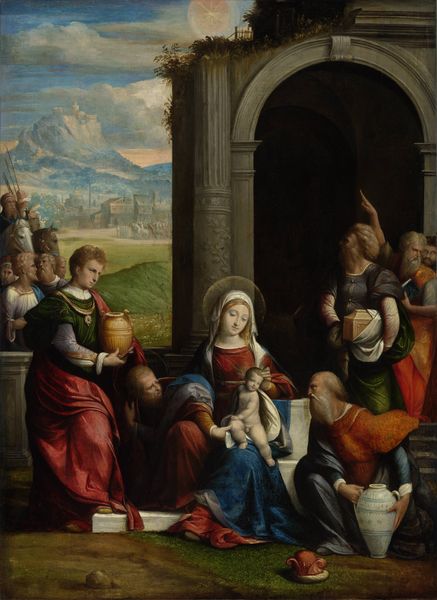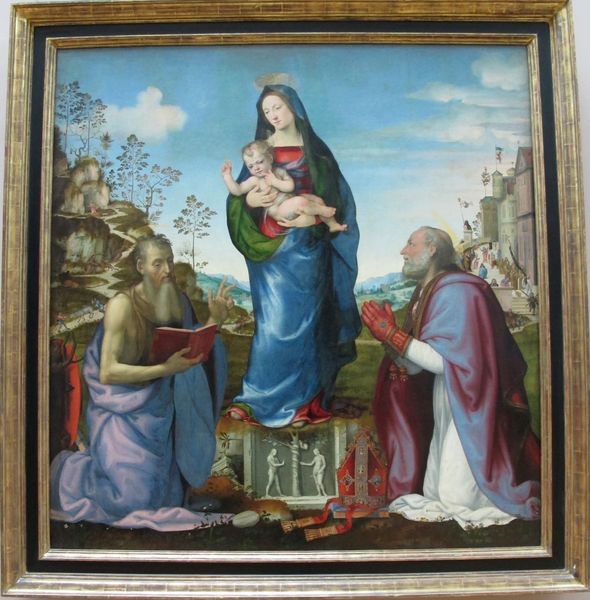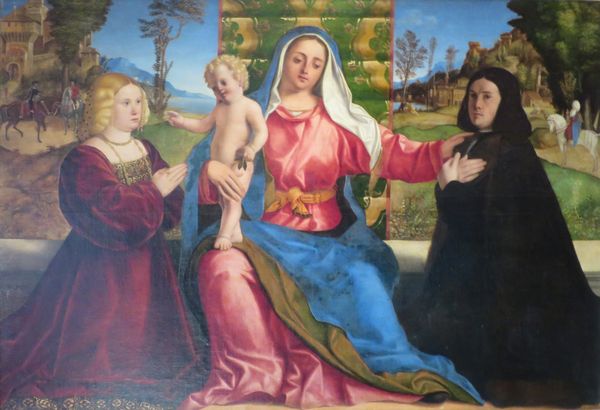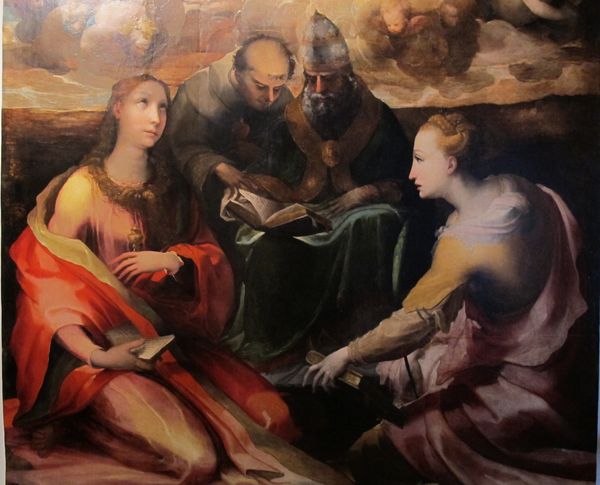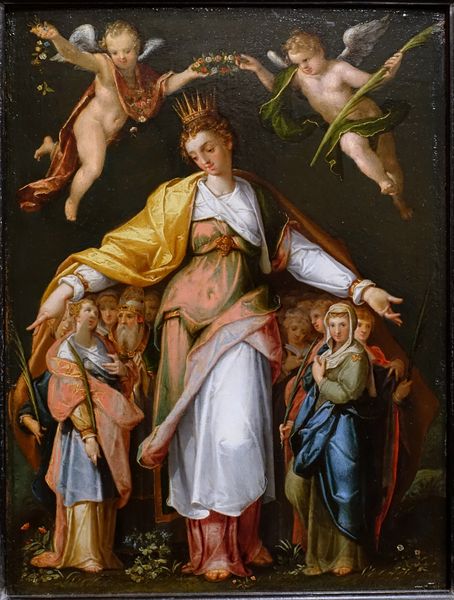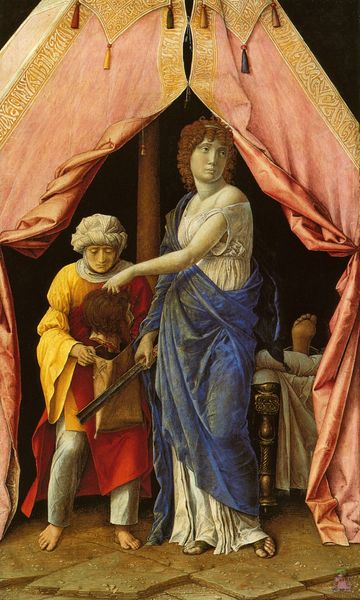
panel, painting, oil-paint
#
panel
#
allegory
#
painting
#
oil-paint
#
figuration
#
oil painting
#
history-painting
#
italian-renaissance
Copyright: Public domain
Curator: Here we have Mariotto Albertinelli’s "The Annunciation," painted in 1511. Editor: The two separate panels immediately draw my eye. The artist really emphasized that visual division in this scene. The angel on the left, Mary on the right, the drama heightened by the split. I’m curious about his process for joining those two perspectives. Curator: Indeed, the diptych form, rendered in oil paint on panel, lends a fascinating dimension to the scene. We see Gabriel, attended by other angels, approaching Mary with the lily, symbol of her purity. Above, the dove, representing the Holy Spirit, sheds divine light. The symbolic weight is heavy here, isn’t it? Each element carefully chosen to underscore the gravity of the moment. Editor: Right, but let’s not forget the physical labour and resources behind all of that symbolism! Sourcing pigments, preparing the wooden panels – someone painstakingly crafted the underdrawing for Albertinelli’s careful brushstrokes. It’s all grounded in the material world, not just floating in some ethereal realm. And even that ethereal dove is just built with lead and oil paint. Curator: Of course, it is painted, and skillfully so. The soft rendering of flesh tones, the meticulous folds in the drapery - these techniques serve to elevate the subject. The very material he employs contributes to an otherworldly vision, a visual vocabulary built on centuries of Christian art and theology. And for the angel there seems to be this direct connection from above, like some conduit for spiritual transformation. Editor: I’d argue that even that "spiritual transformation" can be linked to earthly influences. Wealth from trade funded these artistic commissions. Guild structures dictated artistic training, from studio hand to recognized master. How much say did Albertinelli’s patrons have in the iconographical specifics? Curator: A vital point. Artistic patronage was indeed a powerful shaping force in Renaissance art. The wealthy commissioners would certainly had a substantial input to reflect both the conventions and aspirations of their society, even while seeking personal salvation or commemoration. It’s always a confluence of sacred narrative and socioeconomic realities. Editor: Exactly. We’re often conditioned to focus on individual genius, but the Annunciation was undoubtedly the result of many hands and many interests, even before the artwork was produced and started moving through the market! Curator: Yes, contemplating "The Annunciation," reminds us that even depictions of the divine are firmly rooted in the material and social fabric of their time. Editor: And that seeing the seams in a artwork in no way diminishes its significance, it enriches it.
Comments
No comments
Be the first to comment and join the conversation on the ultimate creative platform.
